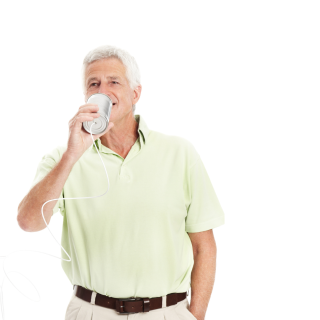Posted Wednesday December 7, 2022
Earwax and moisture build-up are the main culprits of hearing aid problems
Earwax (or cerumen) is a major source of problems because inserting the device into your ear stops wax from its natural progression down the ear canal. Your hearing aid can pick up earwax which will clog ports such as the battery door, microphone openings, and volume and push button controls. And if it makes its way in far enough, can cause the delicate parts to degrade, damaging the vital components of the hearing aid. We recommend regular ear checks and wax removal, you can book your appointment with our fully trained Ear Nurses here: book now
Moisture – anything that has a water content in it – is another bane of hearing aids. Traditional advice is to avoid or minimise hearing aid use around water. However, this doesn’t protect them against accidental exposure, such as forgetting to take them off in the shower, or living in humid climates. Water and moisture feature during a range of leisure activities, such as going to the beach, sailing, kayaking, and working out at the gym.
Even though hearing aids are sealed and fastened securely, moisture can still enter through ports and openings – the microphone, the battery doors, the volume or push buttons. The salt content in the moisture can corrode internal components and the battery contacts and short circuit the hearing aid, and moisture that accumulates inside hearing aids can cause intermittency, distortion and reduced gain (especially in the higher frequencies), leading to reduced performance. Over time, repeated exposure can cause corrosion damage to the delicate micro-electronic components within hearing aids, requiring repair or servicing.
Here are six tips to keep most hearing aids in good working order
- Clean and inspect your hearing aids daily. Like brushing your teeth, cleaning your hearing aids should be a daily routine. Wipe them with disinfectant wipes, a soft cleaning cloth or cleaning tablets that are dedicated for hearing aids and earmolds. Simply wiping the aids removes surface earwax and dirt, and reduces the dirt build-up around the ports and openings.
- Protect your hearing aids when you are ‘getting ready’ for the day. Don’t wear them when applying hair spray, perfume or cosmetics as the fine spray can clog the microphone outlet and volume controls, and damage the hearing aids.
- Keep your hearing aids dry. Try to prevent water entering and damaging hearing aids in the first place. When around water, physical covers, such as Ear Gear, placed over the hearing aids may help protect them from splashes and other exposure to water. If you just don’t want to worry around water consider trying out Audéo Life, the world’s first rechargeable waterproof hearing aid.
- If your hearing aids do get wet, don’t panic. Use a cleaning and drying system, like drying capsules or an electronic drying kit with a built in UV-C light, to draw the moisture away from the hearing aids. Kits with UV-C light also reduce germs and thus reduce the risk of skin infections in and around the ear. This can be done daily or weekly.
- Replace wax filters regularly. Wax traps can get clogged and need to be replaced regularly. The moment voices sound muffled, or you replace a fresh battery and the hearing aid isn’t working, it is possible the wax filter is full and needs to be replaced.
- Practice good storage habits. When not wearing your battery operated hearing aids (e.g., at night), open the battery door and remove the battery to let moisture escape from the hearing aid, and conserve power and reduce the chance of battery corrosion.
Every time you take your devices out always put them into their case. They should be stored in a room that has low moisture or humidity, and always safely out of reach of children or pets. With these simple tips, you can keep your hearing aids in good working order for many years to come!



